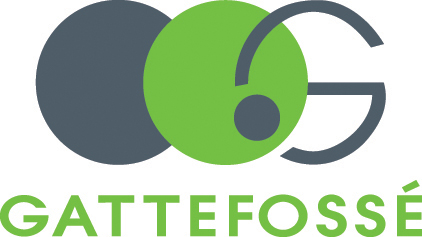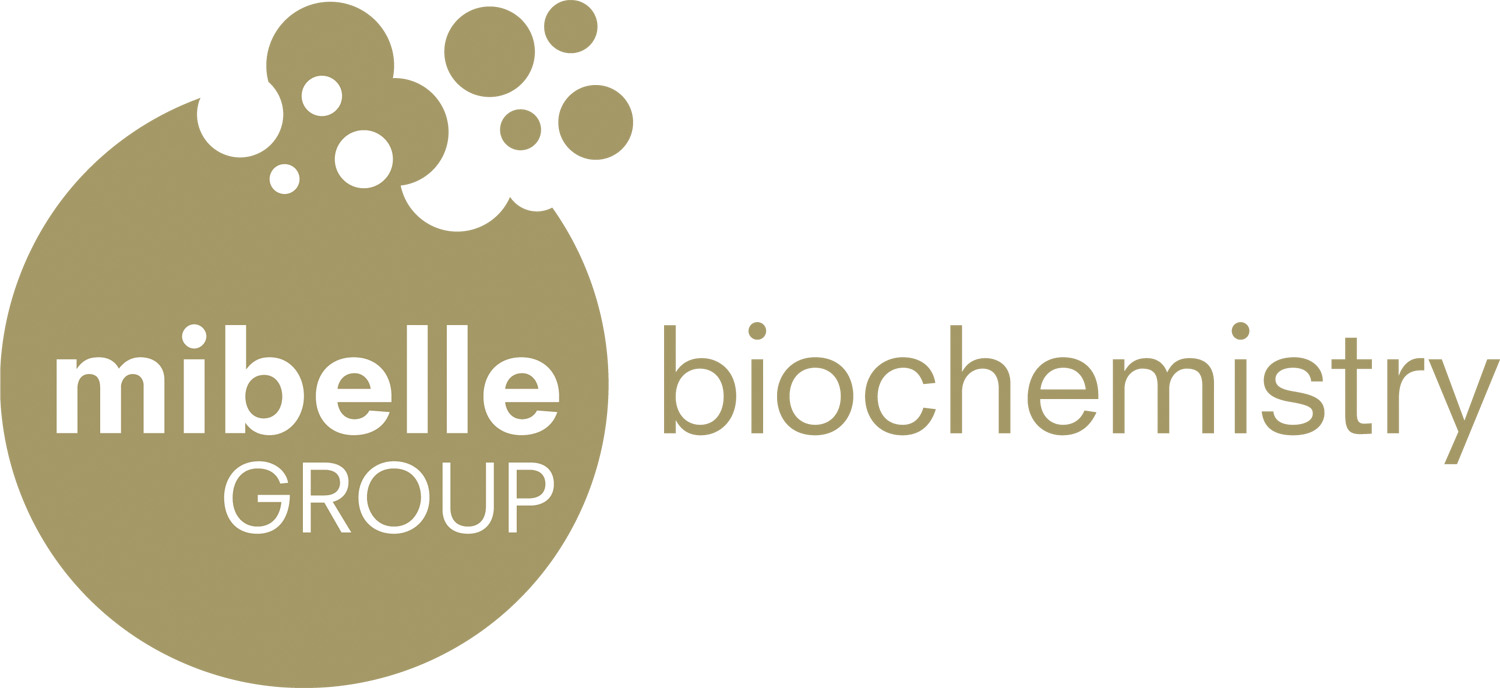From 12-14 April, in-cosmetics in Paris proved a hub for innovative ingredient launches. The event attracted 10,000 unique visitors from the personal care industry – an increase of 14% on 2015 – and more than 100 new products were showcased in the Innovation Zone.
In the first part of its review of novel ingredients from exhibitors at in-cosmetics, SPC focuses on the new skin care actives that will help you keep ahead of trends in the coming year.
New approaches
In something of a backlash against Photoshopped selfies and lunchtime Botox, and going hand-in-hand with a general move towards wellness and clean living, it has become quite fashionable to accept the ageing process. For many women the aim is now to look beautiful and healthy at whatever age, rather than striving to look younger.
This has inspired some interesting approaches to addressing older skin from suppliers. Lubrizol-owned Lipotec, for example, believes that it presents “an opportunity for skin care cosmetics that do not necessarily make you look younger, but help you to look healthy and beautiful at your age”, Dorota Niemczycka, the company’s Marketing Communications Manager for Active Ingredients told SPC. Terming the trend ‘serene beauty’, Niemczycka noted: “People who try to look 20-years-old at 40, 50 or 60 don’t end up looking young – they end up looking strange. But you do need to take care of yourself.”
To assist this, Lipotec launched at the show an active ingredient for the improved appearance of menopausal skin: cellynkage marine ingredient, which boosts communication between ageing skin cells. Inspired by a microorganism living in the saline Agua Amarga salt marsh, cellynkage marine ingredient enhances the levels of connexins – transmembrane proteins that form intercellular gap junctions, mediating the passage of signals between cells in direct contact, and between epidermal and dermal cells – which are reduced in mature skin post menopause.
Used at 0.02mg/ml the ingredient significantly increased connexin levels in menopausal conditions; augmented cell communication via gap junctions by up to 1.9 times; and upregulated genes involved in ECM synthesis while downregulating those involved in its degredation.
In vivo, a 2% cellynkage cream resulted in a 15% thicker menopausal epidermis after twice daily usage for 56 days, as well as a 2.4% increase in collagen density and a 113% improvement in microrelief structure compared with placebo.
Skin texture was the focus for Gattefossé, which introduced an ingredient to kick-start the cell renewal process. Gatuline Renew, a natural extract of Japanese cedar buds, acts throughout the epidermis from the basal layer to the stratum corneum. It boosts the expression of KI-67 (a proliferation marker expressed in basal layer keratinocytes) by 84%; boosts involucrin in the stratum spinosum by 87% and filaggrin in the stratum granulosum by 38%, both of which are markers for cell differentiation; increases by 25% the expression of ceramide synthase 3 mRNA (localised in lamellar granules for the synthesis of long-chain ceramides, which contribute to the formation of intercellular cement); and, in the stratum corneum, it increases by 50% the enzymatic activity of KLK-5, which plays a major role in desquamation.
Under the action of Caspase 14, filaggrin undergoes further processing in the upper stratum corneum to release free amino acids that assist in water retention; its expressing is boosted by 93%.
The result, says Gattefossé, is a fully recovered barrier function with optimal preservation of water content and skin that is smoother both to the eye and the touch.
Suppliers also turned their attention to non-ageing related issues. For example, Solabia scooped the Bronze Innovation Zone Best Active Ingredient Award for Redyless, developed to address facial flushing and chronic redness.
Redness has multiple causes, including heredity, temperature change, spicy food, alcohol, emotional stress, sun exposure and pollution. The ingredient – based on a new molecule (piperonyl glucose) obtained by the transfer of glucose on piperonylic alcohol – inhibits the activity of specific receptors sensitive to temperature and food related stress: TRPA1 and TRPV1.
Hyper reactivity to such stimuli is expressed by blood vessel network disruption, known as angiogenesis and Redyless reorganises the structure of the blood vessel network by controlling this angiogenesis, stimulating vessels’ resistance to deformation and educing their diameter to reduce the size and intensity of the redness (be it erythrosis or rosacea).
Another issue that can affect people of any age is enlarged pores, but the causes are frequently for different reasons. In younger consumers, the reason is excess sebum production, however with age it is often to do with incomplete keratinocyte differentiation; the retention of nuclei in the corneocytes prevents normal desquamation, which results the accumulation of dead cells in the pore, causing mechanical pore dilation.
Scooping the Silver Award for its Miniporyl active, Lucas Meyer addresses enlarged pores on three levels: by increasing the synthesis of filaggrin, involucrin and keratin 10 to normalise the differentiation process of keratinocytes into nucleus-free corneocytes; by regulating sebum accumulation in sebocytes; and by increasing the skin’s contraction properties to close pores.
The anti-wrinkle and skin firming effects of the new smart collagen-management active from Rahn, Liftonin-Xpert, were covered in depth in the April 2016 issue of SPC. But the active is also being promoted based on its efficacy as an anti-stretchmark solution, a nail health enhancer and in tattoo aftercare.
Liftonin-Xpert is based on sustainably sourced Bulbine frutescens, a medicinal South African plant that contains the active compound acetylated polymannose, which stimulates fibroblasts to trigger collagen synthesis. However, when boosting this process, Rahn wanted to avoid the unregulated production of low quality collagen that can result from the stimulation of the TGF-B receptor.
Fortunately, Bulbine frutescens also contains knipholone ¬– only present in the genera Bulbine and Kniphophia – which decreases the level of collagenases, but also inhibits leukotriene synthesis and blocks uncontrolled collagen boosting.
Used at 3% twice daily over 84 days, Liftonin-Xpert improved the appearance of stretchmarks relative to the initial condition by 212% over placebo. The lateral and longitudinal roughness of strechmarks, as well as the depth, width, length and area volume were all significantly reduced.
An anecdotal in vivo study, meanwhile, showed that application on the fingertips for 14 days (3%, twice daily) improved the quality of dry and brittle skin around the nails, while another study on a Caucasian male with a fresh tattoo indicated that an emulsion of 3% Liftonin-Xpert for 24 days not only provided immediate soothing but also resulted in better adherence of the tattoo colour in the dermis.
A healthy lifestyle involves outdoor activity, but this is accompanied by sun exposure and the potential for solar elastosis. And while people will apply sunscreen to swim or to ski, on a day-to-day basis, many still don’t. BASF Beauty Creations draws attention to a process triggered in response to UV light that upsets the balance of the elastic fibres in the dermis – leading to too much elastin and too little LOX-L enzyme to assemble it into functional elastic fibres. The resulting aggregation of non-functional elastin is what causes the skin to lose its elasticity, and become loose and lined.
A new witch hazel extract from BASF called Lys’Sun rebalances the expression of LOX-L and elastin (at 0.05% it elicits a 2.2-fold induction in the level of LOX-L in UVA treated fibroblasts). It also inhibits at 0.5% levels of elafin (an elastase inhibitor) by 41%. Clinical tests showed a 7.8% decrease in wrinkle depth in eight weeks, with a 14.6% improvement in firmness after 12 weeks.
Two new peptide products from DSM were Syn-Up and Syn-Star. The former is designed to address the universal issue of dry skin. The company’s research showed that urokinase and plasmin, two serine proteases in the epidermis play a major role in skin resilience. By inhibiting the activity of both, Syn-Up boosts skin resilience enabling it to better recover from the external stresses that trigger dryness.
Syn-Star meanwhile offers mattifying effects on Asian, Caucasian and African skins. It inhibits dipeptidyl peptidase-4, a key enzyme involved in sebum flow, while also increasing the stability of intermolecular collagen crosslinks in more mature skin.
Protection: beyond UV
Contemporary issues, such as global warming, urbanisation and the usage of devices, together with the wellness trend means that products promising to protect our bodies from the onslaught of modern life are gaining traction globally.
Anti-pollution is an especially popular claim with East Asian city dwellers, but urbanites suffer from this issue the world over, and the trend is now going global. Indeed, pollution protection was a key theme for the Croda stable at in-cosmetics 2016, as Croda’s Christopher Bannister-Bailey, Marketing Manager, EMEA, Insights and Communications, told SPC.
The issue, he said, was “trying to get our customers to understand what it is that the consumers understand – which isn’t actually very much”. Research by Croda across cities in four different geographic regions in 2015 showed that, of the main forms of pollution – air, water, noise and visible – consumers were most attuned to air pollution (especially in Chinese cities) and water pollution in Brazil and India-based cities.
While “there is consumer understanding about UV” and the fact that “UVB causes the burning and UVA causes the damage below”, Bannister-Bailey, notes that the issues associated with high-energy visible light, visible light and infrared (IR) are not currently understood by the general populace, despite research suggesting that IR has the potential to cause more damage to the skin than UVA; he recommended a Sederma anti-ageing active Venuceane for its activity against UV and IR-induced ageing.
Also fitting the protection trend well is Sederma’s new pollution defence active ingredient, Citystem. Commenting on the ingredient, Sederma’s Marketing Director Olga Gracioso said the development process required a better understanding the nature of the problem. While anti-PM2.5 is a buzzword within anti-pollution claims, the original International Organization for Standardization (ISO) definitions for particulate matter (PM2.5 and PM10) were created based on impact following inhalation. And as Gracioso noted, “these categories are accurate for the respiratory tract and for pulmonary disease, but they are completely irrelevant for the skin, because the skin comes into contact with all pollution – whatever the size”.
Moreover, as well as the size, other factors that influence the impact of particulate matter on the skin must also be noted, Gracioso said. “We might imagine that a particle which is quite big would not penetrate the skin, but the chemicals that are absorbed onto that particle might be small enough to penetrate [as in the case of the toxic hydrocarbons absorbed onto the inert carbon core of diesel particles].”
And penetration – which can be inter or intracellular, or which can be via the pores or hair follicles – can also be effected by the particle’s lipophilicity and shape. So there are many parameters to take into account when discussing anti-pollution.
Also important is consumer expectation. Consumer focus groups in China, the US, the UK and Brazil indicated that their dream anti-pollution product would be built around four pillars: protection, removal, strengthening and repairing. So Citystem, based on Marrubium vulgare, has been developed to reduce particulate matter cellular intake (by 76% at 2%), to neutralise toxic oxidant species, to reinforce the skin barrier when exposed to a PM solution by 18.6% versus control, and to repair the cell metabolism by replenishing energy levels and reducing inflammation.
Blackheads contain oxidised squalene and dust particles that have been absorbed by the oil present, and are therefore a particular problem in polluted environments. In vivo, Citystem was found to reduce blackhead numbers by up to 50% after 28 days of twice-daily application at 2%, while skin roughness was reduced and skin texture improved.
Another take on the protection theme is Blumilight from Ashland Specialty Ingredients, which is the first ingredient to help maintain he presence of blue light-sensitive photoreceptors in the skin.
By 2020 it’s estimated that 5.9 billion people worldwide will have access to smartphones, which (like most devices) emit blue light, a high-energy form of visible light in the blue band (ranging from 400-500nm).
As the company’s Global Marketing Director for Biofunctionals, Jöel Mantelin, explained: “In its natural form, the body uses blue light to boost alertness and regulate the circadian rhythm… but blue light used on a daily basis emits a pulse of blue radiation that generates oxiditative stress… it increases ROS, damages the DNA, delays barrier recovery and has a negative influence on the inflammatory response, immune recovery and on carotenoid content in the dermis.”
A peptidic fraction of Criollo porcelana, a variety of cocoa, Blumilight offers antioxidant benefits, reducing mitochondrial and cellular ROS induced by blue LED in vitro. It is also the first skin care ingredient demonstrated to maintain opsins 1, 2 and 3, the light-activated receptors expressed in epidermal skin which serve as photosensors.
A global photoprotection product newly launched by Greentech Biotechnologies is Soliberine, which targets the different harmful effects of UV, blue light and IR wavelengths, namely the formation of free radicals, inflammation and the degradation of the proteins of the skin’s extracellular matrix.
Derived from Buddleja officinalis – mountain flowers adapted to high levels of solar radiation – Soliberine is rich in the phenylpropanoids verbascoside and echinacoside. In vitro, it has been proven to protect keratinocytes from UV-induced damage, maintaining skin homeostasis and inhibit the UV-induced isomerisation of trans-UCA to cis-UCA, which has potent immunosuppressive properties. Moreover, it exhibits a high antioxidant capacity and acts against the acute and chronic UV-induced inflammation that cases photoageing by inhibiting the production of proinflammatory mediators, such as LTB4. In ex vivo tests, meanwhile, the versatile ingredient was discovered to inhibit UV-induced peroxidation, which can lead to the disruption of cellular membranes.
When it comes to the impact of IR light on skin, Soliberine reduces the level of IR-induced MMP1 released, thereby combating ECM degradation. It also reduces the accumulation of ROS induced by exposure to blue light.
The upshot of living at a fast pace in an environment of air and light pollution is unfortunately going to be stress, and one of the most successful launches of the in-cosmetics 2016 event was designed to control skin stress. Neurophroline from Givaudan Active Beauty won the Gold Award in the Actives category on the strength of an attractive concept based on novel science.
As Fabrice Lefevre, Marketing and Innovation Director at Givaudan Active Beauty, told SPC: “When you’re stressed you produce cortisol and this is produced in your brain – but we discovered that during embryonic development, the brain and skin come from the same origin and that skin also makes cortisol. When you get stressed you get a rush of cortisol, which is a positive thing, but when you get chronic stress it can be extremely damaging.”
A very specific fraction of wild indigo, traditionally used in Ayurvedic medicine, Neurophroline breaks down cortisol production by 70% in just two hours. “On top of this, the extract stimulates B-endorphin, the wellbeing hormone,” stated Lefevre.
Clinical trials used volunteers with stressed skin living in polluted environments, and a fast improvement of both skin redness (reduced by 2.4 times after 28 days) and luminosity (57% in one month) was observed.
The win was doubly symbolic for Givaudan, which recently acquired Soliance and Induchem. “The product came from the Soliance team who worked with the Induchem team – it’s the perfect combination of skills, experience and patience,” said Lefevre. “The second symbolic thing is that it is the first ‘baby’ from Givaudan Active Beauty and it’s already a golden baby!”
Gene genius
Genetics, or rather epigenetics – heritable changes in gene expression (often influenced by external factors) that do not involve changes to the underlying DNA sequence, but which affect how cells read the gene – is a hot topic, forming the basis of several new cosmetic ingredients launched at in-cosmetics 2016.
Perhaps the best-known example of epigenetics is the physical difference between worker and queen honeybees, despite their identical DNA sequence. In 2011, scientists discovered that the consumption of royal jelly (containing a peptide called royalactin) throughout the larval development modified the gene expression of queen bees. Royalactin has also been found to interact with epidermal growth factor receptors in human skin to promote protein turnover and tissue regeneration.
The latest product from Mibelle Biochemistry, RoyalEpigen P5, is a royalactin-like peptide incorporated into a shea butter-based soft sphere carrier system for better penetration and uptake, and for controlled-release delivery.
Tests showed RoyalEpigen P5 at a level of 0.011% to accelerate would healing by half a day and at a level of 0.033% to accelerate wound healing by a day and a half. It also improves the proliferation of keratinocytes by 203% after three weeks compared with control, and activates protein turnover by stimulating the proteasome.
A new moisturising, anti-ageing and anti-wrinkle active ingredient from Ashland, PhytoRNx Baobab biofunctional, is the first ingredient based on the company’s patented process for extracting micro-RNAs from plants.
Explaining the rationale behind the concept, Ashland’s Mantelin said: “The difference between plants and animals is that when the environment becomes difficult animals can escape and find a better place to live; plants are rooted and can’t, so they have to develop strategies to adapt. And these strategies through evolution are accumulated through epigenetic experience in the genes, so that when a drought occurs, or flooding, the different defence systems are ‘in the library’ and are activated in what is typically an epigenetic response.
“We said, why not take advantage of this. Maybe micro-RNAs from plants can better help us to adapt to a changing environment.”
Once the technical platform had been developed baobab was one of the first candidates for Ashland, as “it’s easy for consumers to understand that this is a tree that has to withstand environmental stress, because of its location”, Mantelin added.










